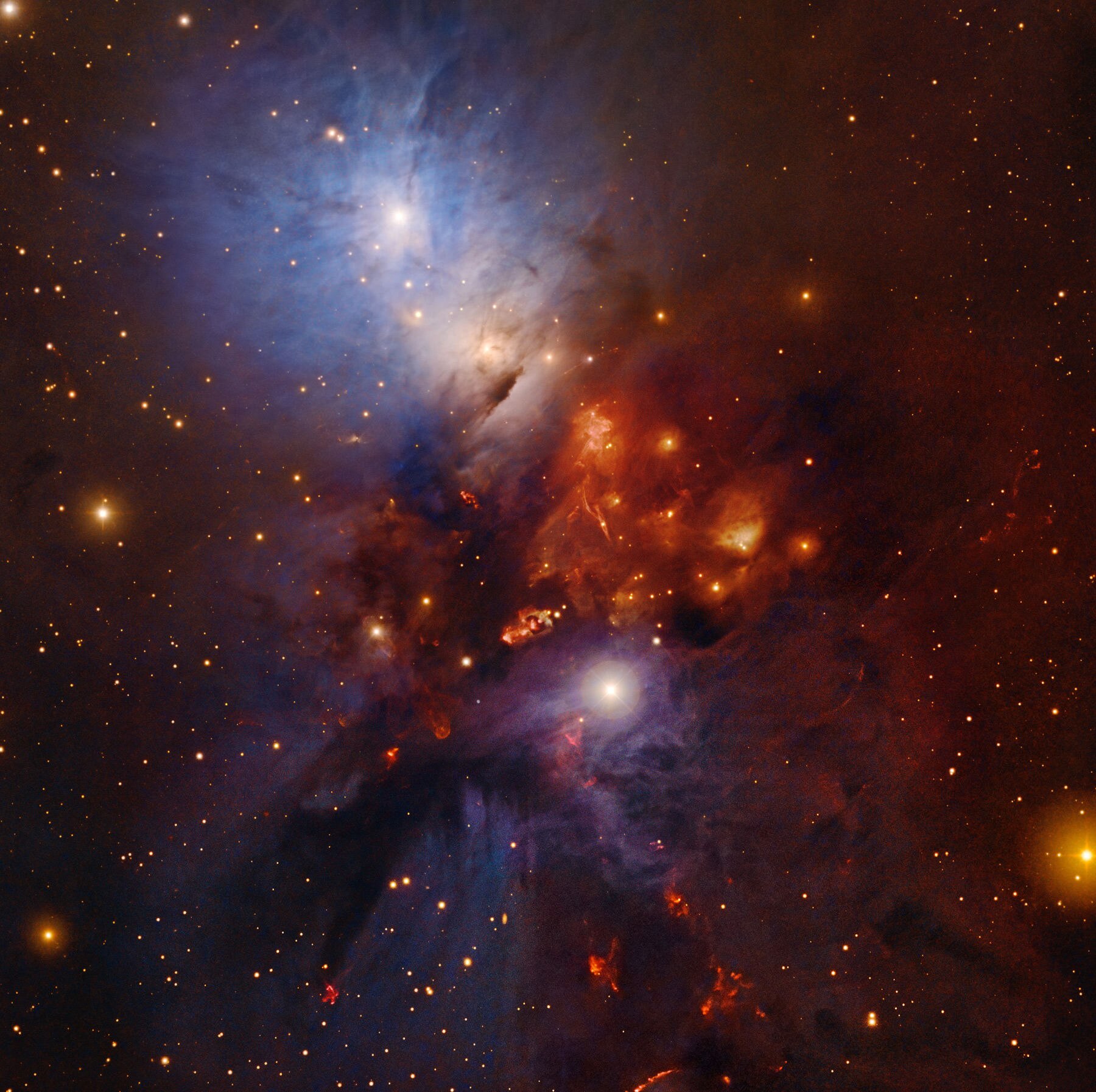Create a free profile to get unlimited access to exclusive videos, sweepstakes, and more!
The Chaotic Glory of Starbirth

Robert Gendler is the gift that keeps on giving. He’s an accomplished astrophotographer (why, I would never make such a claim without ample evidence) who takes observations from professional observatories and adds to them images he’s taken himself and with other people. The result is substantial beauty … and here’s another bit of proof for you in the form of the ridiculously chaotic star-forming nebula NGC 1333:
This cloud is a sprawling stellar nursery, a dense cloud that’s still collapsing, fragmenting, and creating stars hither and yon. One feature of many young stars is that they rotate rapidly, and are still surrounded by the thick disk of gas and dust from which they formed. Their still-intense magnetic fields get wound up like a corkscrew, and this can launch twin beams of matter out from the poles of the star.
These are called Herbig-Haro stars, and NGC 1333 is littered with them. I found several perusing Gendler’s image, and inset one here. The cloud is choked with thick, opaque dust, which hides a lot of the details. Infrared light can pierce that veil, though, so images from observatories like the Spitzer Space Telescope can reveal far more details. In fact, in that linked article I have an in-depth discussion about both of this nebula and the HH objects in it (and a close-up of one that actually has curved beams, which are lovely). I suggest giving it a read to truly grasp the awe-inspiring nature of this object.
Gendler’s image is comprised of observations from the 8.2 meter Subaru telescope, the Digitized Sky Survey, telescopes with the NOAO, and his own data in collaboration with Roberto Colombari. These are magnificent telescopes, one of the reasons the final image is so spectacular. Another is that NGC 1333 is only about 1,000 light years away, relatively nearby on a galactic scale (the Milky Way is 100,000 light years across). This makes it one of the closer massive star-forming regions in the galaxy, so we get a little more detail than we otherwise might.
It always amazes me that so much science can be found in objects so beautiful. I wonder what this tells us about our minds, our perceptions, and how we evolved to appreciate beauty ... and how useful an ability like that can be?



























